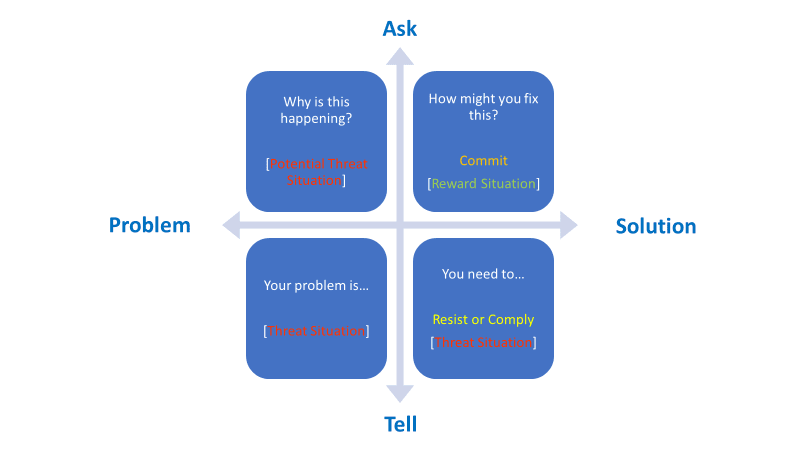By Linda Bodnar, Ph.D., ACC
When raising our kids, I was reminded time and time again of the huge difference in how they responded to a request depending on whether it ended up being a “have to” or a “want to” from their perspective. If we could get them to a “want to,” the request actually got done and everyone was happy. A miracle! I bring up this example not because leading in the business world is the same as dealing with children. (Of course it may seem that way at times! And I’m pretty sure we ourselves have even played the “resistant child” role in our work careers at some point, even if unknowingly ?)
So if I’m not bringing this up to point out the similarities between raising kids and leading people, why am I using that example? Because it shows how humans are hard-wired throughout their life to be much more committed to something if it is seen as a “want” rather than a “must.”
You may have heard about the Resist – Comply – Commit continuum in relation to leading a team. When we as leaders are trying to move an individual toward action, the response could fall anywhere on this continuum. We would of course hope to avoid having resistance be the response. Compliance is a bit better, since at least the action will be taken. But who will they blame if it goes wrong? Us! “Well, you told me to do that.” If we can get them to true commitment, they’ll be much more likely to give it their all, stick with it, and hold themselves accountable for the results. So how do we do that?
There has been a growing interest in neuroscience applied to leadership over the past several years, partially because of advances in both technology and theory but also because leaders resonate with the understanding that comes from knowing that the cause of many of their reactions are physiological and not just due to a “personal flaw”. (You might want to read the article by David Rock and Jeffrey Schwartz, “The Neuroscience of Leadership,” if you’d like to find out more about this topic.)
We are all hard-wired to be constantly evaluating whether something is a threat or a reward and will default to judging it as a threat more times than not. However, when we feel it is a reward situation, we are much less likely to fall into our fight/flight reaction and instead to use our pre-frontal cortex to think logically about the situation. In the chart below, I took David Rock’s TAPS Model (Tell-Ask-Problem-Solution) and added the Threat/Reward concepts and the Resist-Comply-Commit continuum. A bit oversimplified, but hopefully you get the idea…

Based on this, what can leaders do to increase their chances of moving their team members from resistance to commitment? Try to keep people in the commitment/reward zone:
- Avoid telling them the problem (lower left quadrant)
- Use non-threatening, curiosity questions to ask about the problem, when needed (upper left quadrant)
- Ask them for their solution (upper right quadrant) rather than providing the solution for them (lower right quadrant). For example, “What ideas have you been thinking about regarding how you would solve this?” or “What ideas to you have around how to do this differently in the future?”
- Note: Based on situational leadership concepts, asking them for their solution might be a threat situation for those who have no knowledge or experience on which to rely, so in that case telling them the solution might actually create more of a reward situation. Then as they start moving in that direction, a shift towards asking their ideas around an approach could unleash their commitment.
My favorite quote from the “Neuroscience of Leadership” article that seems to capture the essence of moving people from resistance and compliance to commitment is this:
“Perhaps you are thinking, “This all sounds too easy. Is the answer to all the challenges of change just to focus people on solutions instead of problems, let them come to their own answers, and keep them focused on their insights?” Apparently, that’s what the brain wants.”
______________________________________________________________________________________________________________________
For more on how to use neuroscience-based language with your teams, consult with Linda today.

